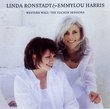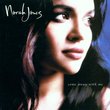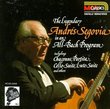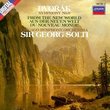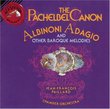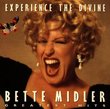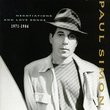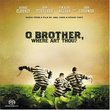| All Artists: Fritz Kreisler, Niccolo Paganini, Christoph Willibald Gluck, Cesar Cui, Grazyna Bacewicz, Edward Elgar, Dmitry Shostakovich, Antonin Dvorak, Sergey Prokofiev, Pyotr Il'yich Tchaikovsky, Karol Szymanowski, Pablo de Sarasate, Gabriel Faure, Alexander Nikolayevich Skryabin, Bela Bartok, Eugene Ysaye, Midori (Goto), Robert McDonald Title: Midori ~ Encore! Members Wishing: 0 Total Copies: 1 Label: Sony Original Release Date: 1/1/1992 Re-Release Date: 12/8/1992 Genres: Dance & Electronic, Jazz, Special Interest, Classical Styles: Marches, Chamber Music, Forms & Genres, Concertos, Historical Periods, Modern, 20th, & 21st Century, Instruments, Strings, Symphonies Number of Discs: 1 SwapaCD Credits: 1 UPC: 074645256825 |
Search - Fritz Kreisler, Niccolo Paganini, Christoph Willibald Gluck :: Midori ~ Encore!
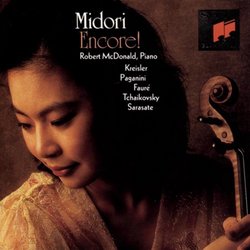 | Fritz Kreisler, Niccolo Paganini, Christoph Willibald Gluck Midori ~ Encore! Genres: Dance & Electronic, Jazz, Special Interest, Classical
![header=[] body=[This CD is available to be requested as disc only.]](/images/attributes/disc.png?v=430e6b0a) ![header=[] body=[This CD is available to be requested with the disc and back insert.]](/images/attributes/disc_back.png?v=430e6b0a) ![header=[] body=[This CD is available to be requested with the disc and front insert.]](/images/attributes/disc_front.png?v=430e6b0a) ![header=[] body=[This CD is available to be requested with the disc, front and back inserts.]](/images/attributes/disc_front_back.png?v=430e6b0a) |
Larger Image |
CD DetailsSimilarly Requested CDs
|
CD ReviewsIncomparable artist elevates brevities to a lofty height! 09/10/1998 (5 out of 5 stars) "Midori starts Kreisler's march with an accented A and then slides wondrously to D. In the ensuing passages she demonstrates her extraordinary flair for making the tone ductile and kaleidoscopic by matchless control of bow pressure and masterly uses of slides and portamento. The middle part is played in a jocular mood, with a sense of irony, as evidenced in some deliberately obtrusive metallic tones and harmonics, bestowing a piquant taste to the music. This is a much more novel, fascinating, and spicy rendition than that of the renowned pedagogue Josef Gingold. Her Praeludium and Allegro again shows copious nuance and contrasts. Unlike Milstein's awful recording at age 55, which is played like an exercise, the slow introduction reflects a deep introspection by this 20-year-old girl, which never sounds boring, but rather reminiscent of Bach's solo sonatas, only less profound. The variety of dynamics, shadings and tone colors plus rubato all add up to a superlative performance. I was delighted to have the opportunity to compare Midori's rendition of Sarasate's Habanera. This is actually a fabulously composed piece with myriads of fantastic effects that will ignite the listeners' imagination. Unfortunately, Sarasate's audience probably could only be entertained by his outward mannerisms and showmanship, but could delve nothing out of the music. Those who listen to his recording will merely feel the music to be a superficial virtuoso piece played with the greatest nonchalance--which is the hallmark of Sarasate. There's scarcely any portamento, rubato, vibrato, and variety of tone colors and dynamics, which is the prototypical nineteenth century tradition. For instance, at the outset, a Spanish tune--also incorporated in the 3rd movement of Lalo's cello concerto--is repeated four times: the first two of the same pitch, both on the G string; the third and fourth each ascending an octave. Sarasate played all four phrases with the same bowing and manner, rendering the first two phrases identical. Drab indeed. Midori played the first phrase in an assertive stance, but the second time dragged out the seventh note, turning it into a provocative gesture. The third phrase, an octave higher, was tenderly played with sweet legato, thus providing a stark contrast with the fourth: spiccato at first, then a thrilling ricochet [throwing the bow down on the string so it bounces automatically for several times] in place of the printed legato grace notes, imparting a mischievous character. How wonderful! Throughout the rest of the piece, Midori copiously and idiomatically--because her temperament is so ideally attuned to the Gypsy spirit--employed an infinite array of expressive devices, thus the piece was played frolicsomely, expressively, flirtatiously and seductively. One can find similar traits in her rendition of Bartok's Romanian Folk Dances. Simply listen to the opening melody played on the G string and one should easily recognize her individuality, especially when compared with other violinists with so-called patrician elegance, such as Szeryng. Her elastic and pliable tone stores pent-up energy, which seems about to explode at any time. Midori's stylistic versatility is tremendous. Just when you're going to classify her as a Gypsy violinist, she and her meltingly beautiful tone come up with the most graceful, lovely, touching, and exquisite rendition of Elgar's Salut d'amour. Similar examples are Elgar's Chanson de matin, the introduction of Sarasate's Introduction et Tarantelle (the transition part in the middle is supreme, whereafter the tarantelle is played at an incredible speed), Paganini's Cantabile, Dvorak's Slavonic Dance No.2, Kreisler's Syncopation (plus a sense of humor), Gluck's "Dance of the Blessed Spirits", Ysaye's Reve d'enfant, and Tchaikovsky's Melodie (from Souvenir d'un lieu cher), which merits special attention. Towards the end of the piece, at its second climax, there were two phrases that differ only in one note, and she played the second phrase an octave higher, which really had a climactic and striking effect, what one can never achieve as perfectly if one follows Tchaikovsky's manuscript. Here again, we see that if the performer can think of an original way to express the music better than what the composer wrote, he or she can just forget about the composer's intention. That's the true artist and not just the executioner who implements what the composer--who is also a human being--writes even when he's less inspired. For those keen on twentieth century music, several interesting, savoury and compelling pieces are recorded on this disc, including Szymanowski's iridescent, hauntingly beautiful La Fontaine d'Arethuse, Cui's Orientale, Bacewicz's Oberek, four preludes by Shostakovich, and the aforementioned Bartok's Romanian Folk Dances. Scriabin's devilish Etude in Thirds is, after all, an etude, but Midori does impart musical qualities to it. Her rendition of Prokofiev's March (transcribed from The Love for Three Oranges by Heifetz) most catches one's attention. In the original orchestral version, there's a fanfare-like introduction with drums beating underneath. In Heifetz's transcription, the piano plays the D's of the trumpets, while the violinist plucks C sharp with the right hand. But the sound recorded in this CD is stupefying: it is clear, resonant, yet amusical; it is positively not the sound of pizzicato, but more like a tapping or hammering sound! My conjecture is that Midori struck the wood of the bow at the piano. In any case, it is an ingenious act, and the sound is certainly more akin to the drumming of a marching band! Of course, all these lovable pieces wouldn't be so adorable if the performer's technique was faulty, even when compensated by mesmerizing tone and inspiring artistry. Here's an artist whose technical agility you could fully trust, one who made a sparkling recording of Paganini's Violin Concerto No.1 at age 15, an onerous and intimidating piece which Heifetz never dared to record in his entire life. In a nutshell, if I could only choose to have one collection of miniatures by one artist, I would not select those of Ysaye, Kreisler, Heifetz, or Perlman, but definitely Midori's "Encore!"; which is so felicitously titled." Beautiful and inspiring Pablo Lejarraga | Crofton, MD United States | 12/27/2002 (5 out of 5 stars) "So really I was set out to buy christmas presents for my parents and wanted to get them CDs. I found this CD, and thought it was the best CD I had ever found, after hearing the 30 second clippings. At first, I was going to get it for my mother, but realised that really I was just imposing my own wishes on someone else. I bought the CD for myself. I was ecstatic the entire day. ha and still am.. seeing as I am here writing this review. I am 15, and play the violin. I have a vague memory of hearing Midori play live when I was younger.. but I was probably too young to realise what I was exposed to. This CD inspired me to keep practicing. I now realise how beautiful the violin can really be, when played by someone such as Midori. I have listened to this CD nonstop, and have forced many of my friends to listen to it. I bring it in the car with me, and even now I am listening to it. My favoritie pieces from this CD include the Praeludium & Allegro. I have listened to many other people play it, but many times it is rushed, and played harshly rather than with feeling. Midori plays sensitively, for this is a melancholic but also a very happy piece. I also like the Habanera, being a fan of Sarasate. Then the Slavonic Dance by Dvorak is lovely. It almost sounds as though two very talented violinists are playing together. Then my favorites would be the Romanian dances. The Dance with Sticks, is very authoritative, and has a wonderful powerful melody. The Polka and Quick Dance are lively, and make you want to get up and dance along. Once again, I have heard different versions, where they sound very choppy. Finally the Reve d'enfant, I listen to when I need something to calm down, or before I go to sleep. It is beautiful. Well anyway.. I am repeating myself. Everyone should have this CD. If I could I would rate it beyond 5 stars. I also enjoy works by Annie Sophie Mutter." Evokes feelings of Romance MR WT MAKHATHINI | Durban, South Africa | 07/19/2004 (5 out of 5 stars) "After reading Midori's Encore & Joshua Bell's-Kreisler Album reviews I was confused as to what to buy really in the end I purchased both CDs & I have no regret. Midori's renditons are ALL THE BEST I have no skip track here.This CD has the most romantic tunes some i did not even know.Even though all the tracks are good there were a few that really got me jumping out of bed just to see which track is playing viz:Kreisler's "Syncopation', "Praeludium & Allegro","Miniature Viennese March"2.Prokofiev's "March from The love for Three Oranges"3.Shostakovish:four Preludes esp. track n.9", Bartok's Romanian Folk Dances, Sarasate Oh! man the list is endless.Coming to the debate of Midori vs Joshua Bell, my honest opinion is that both artists are good but Midori has that indepth,soaring, expressive tonality that cuts/touches deep down your guts whether you like the violin or not.Bell has the same touch but sometimes loses it in tonality u know that lyrical expressive sound? dont get me wrong he is also very good.Midori just surpuses Bell by a magine. The piano deserves an applaud Robert McDonald plays very well.My fiancee' does not like classical music in any genre but I must say that in one intimate quality time she was so taken by the sound of Midori as a result she borowed the CD hopefully i will get it back."
|

 Track Listings (28) - Disc #1
Track Listings (28) - Disc #1